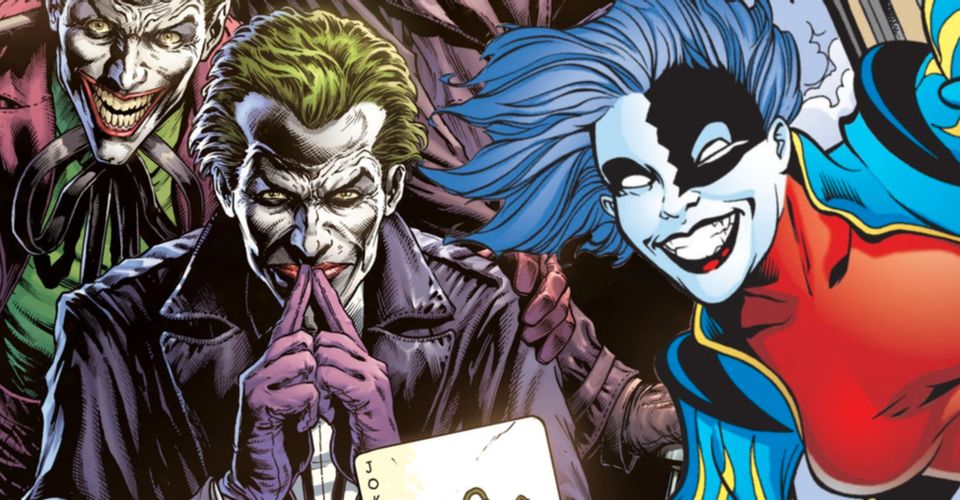Joker’s Female Form Actually Paid Off His Three Separate Identities

One of the most hotly-debated changes to the Joker’s past was actually an integral part to an alternate version of the Clown Prince of Crime. Geoff Johns’ and Jason Fabok’s Batman: Three Jokers followed up on the notion that the Joker was actually several people instead of one. Turns out, a similar idea was used in the short-lived Tangent Comics imprint, albeit a bit more polished.
Joker’s new background was first hinted at in the “Darkside War” arc of Johns and Fabok’s Justice League #50. Sitting on the Metron’s Mobius Chair, Batman gains access to universal knowledge and asks it what the Joker’s real name is. Batman is stunned when the chair tells him that the Joker is actually three people. The plot would later be followed up on years later in the DC Black Label series Batman: Three Jokers.
Despite its controversial nature, the concept of multiple people sharing the Joker identity was seen in the Tangent Comics one-shots The Joker and The Joker’s Wild. Sharing only the name with the criminal clown, this Joker is instead a freewheeling anarchist and hero of the people. After crossing paths with the vigilante, Officer John Keel begins investigating the Joker, and comes across three potential suspects: the Tangent Comics’ version of Lori Lemaris, Mary Marvel and Madame Xanadu. The cliffhanger ending of The Joker only hinted that the three were connected to the hero in some way before The Joker’s Wild revealed that they were all, in fact, sharing the Joker identity.

When Batman revealed that the Joker was actually three people, fans waited to see how such an unexpected turn would be paid off. After all, it was a major change that had occurred in a canon storyline, and the ramifications could have potentially changed everything. However, Batman: Three Jokers was a mostly self-contained story that, while addressing the hanging plot thread, let the mystery end without much consequence. Most comics involving the Joker since have glossed over Johns’ and Fabok’s story, with its place in continuity pretty much up to the reader.
The Tangent Comics’ multiple Jokers, on the other hand, is a very thematically consistent development. From the get-go, Joker’s actions are shown to be an inspiration to the people. Her attitude and actions towards corporations and oppressive figures connects with the masses, so much so that the police attempt to quash her rebellion from spreading. Revealing that the Joker is a shared identity subverts what the reader expects, but it follows up on the idea that her anarchist ideology is very influential.
No matter the writer, it’s always going to be a difficult task to make such a huge change to any popular character. Tangent Comics’ Joker just had a freedom from expectations that couldn’t be afforded to her counterpart.
About The Author
















